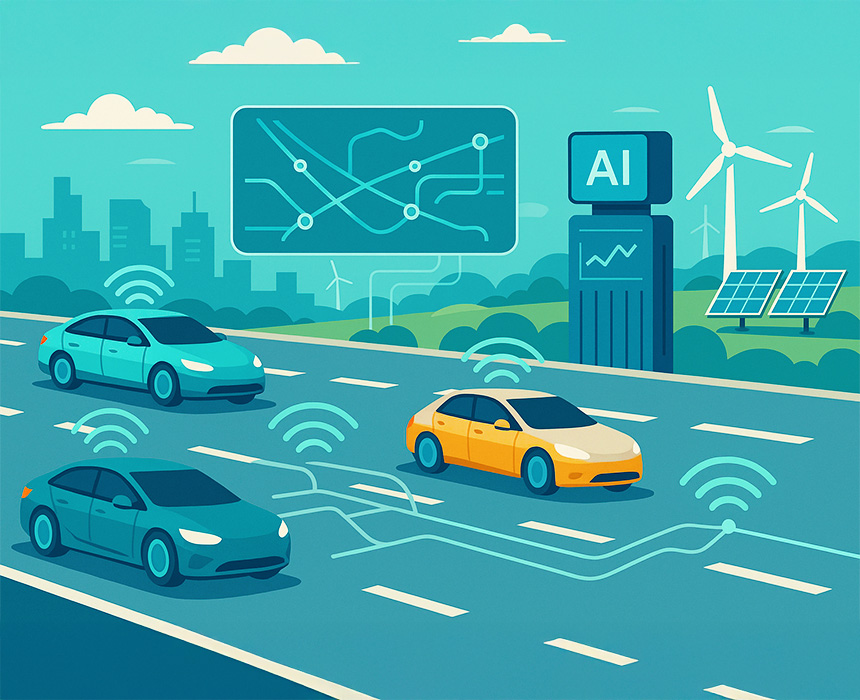Autonomous Driving, Artificial Intelligence and Integrated Technologies in Electric Vehicles
The rapid development of electric vehicle technologies is changing not only the energy transition but also the fundamental paradigm of mobility systems. In particular, autonomous driving, AI-based decision-making, and integration technologies are becoming the main factors shaping cities and global mobility in the coming decade. This transformation is not merely technological progress but also creates multi-layered economic, environmental, and social impacts.
The Rise of Autonomous Driving Technologies
Autonomous driving refers to vehicles’ ability to perceive their surroundings and move safely without human intervention. Compared with traditional vehicles, electric vehicles are more easily integrated into digital infrastructures, thus providing a natural advantage for the advancement of autonomy. Radar, LiDAR, camera systems, and sensors generate real-time data, processed by AI algorithms to enhance situational awareness. The system enables vehicles to analyze traffic density, detect pedestrians and other vehicles, optimize speed, and react safely in emergencies.
The impact on urban planning is significant. With widespread use, autonomous EVs are expected to reduce traffic accidents, optimize road capacity, and increase energy efficiency. Shared autonomous fleets integrated with public transportation may lower private car ownership and reduce congestion.
AI-Based Decision-Making
AI is critical not only for driving performance but also for energy efficiency, maintenance, and customer experience. For example, algorithms analyze battery performance to propose longer, safer charging cycles. In-car systems learn user behavior to provide personalized suggestions: recommending charging stations during long trips, optimizing routes in traffic, or reducing energy consumption.
Fleet management also benefits greatly. Car-sharing operators and logistics companies managing hundreds of EVs can use AI to predict maintenance, optimize routes, and reduce operational costs.
Integrated Technologies and V2X Communication
V2X (Vehicle-to-Everything) communication is among the most important future technologies. V2X enables vehicles to communicate not only with each other but also with traffic lights, road infrastructure, energy grids, and even pedestrians’ smart devices. This creates safer, more efficient mobility. At intersections, for example, vehicles communicating with traffic signals can reduce waiting times and improve traffic flow.
Similarly, V2G (Vehicle-to-Grid) technologies transform EVs into mobile energy units, storing energy and returning it to the grid when needed. This strengthens renewable integration and supports energy sustainability.
Security, Ethics, and Regulation
The spread of these technologies raises security and ethical questions. Autonomous decision-making inevitably leads to debates on what vehicles should prioritize in critical situations. Cybersecurity is equally vital to protect user data from misuse.
Regulatory frameworks differ globally: NHTSA, DOE, FERC in the U.S., EPDK, TSE, BTK in Türkiye, UNECE in Europe, O’zbekenergo, O’zDSt in Central Asia, and Минэнерго, ГОСТ in Russia define standards for implementation.
Societal and Economic Impacts
The integration of autonomy and AI into EVs will affect society at large. Benefits include fewer accidents, cleaner air, less noise pollution, and more efficient transport—all leading to improved urban life. Economically, new jobs in software, analytics, and energy technologies will emerge, fueling innovation.
As private ownership declines, car-sharing grows, and cities repurpose parking lots into green or social spaces, urban life will transform sustainably.
Conclusion
Autonomy, AI, and integration technologies are reshaping EVs and energy management. They not only enhance driving but also align cities with sustainability goals. This 6000+ character overview shows EV technologies are part of a global social, economic, and environmental vision—not just technical progress.




